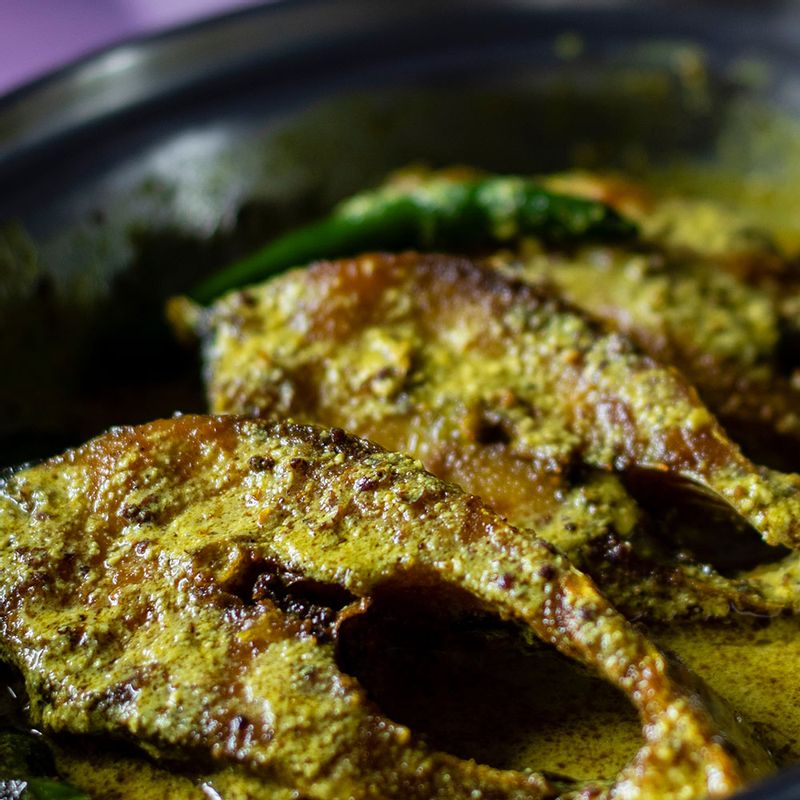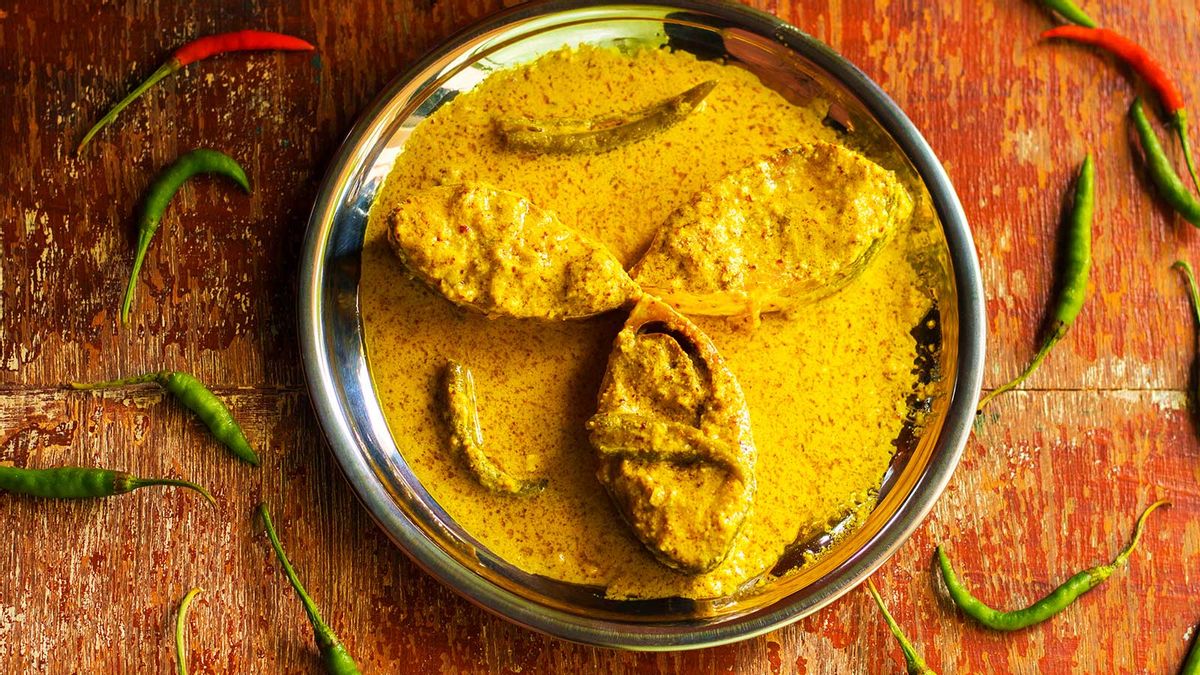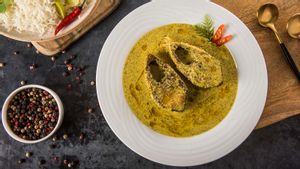A meaty cholar dal (Bengali-style chana daal) awaits its turn on my plate that is brimming with cutlets, kebabs, a khichuri cooked with goat meat, chicken bhorta and some tangy aubergine. The flavours are subtly familiar, often resembling Bengali, but something is missing.
“Where’s the luchi to eat with my cholar dal?” I ask of a combo that is unmistakably inherent to the cuisine. There is no luchi I am told.
Seeing me gobsmacked, Nayana Afroz smilingly hands me a lachha paratha instead. The Dhaka-based home chef was in Mumbai to curate a Bangladeshi food festival at Sofitel Mumbai-BKC. As she takes me through some of her signature dishes, which include mutton cooked with a native lime, we begin to draw similarities between Indian Bengali cuisine and contemporary Bangladeshi food.
Flavours of the past
Bengalis living on either side of the border may speak the same language, share similar cultural values and history, but are not the same people in the kitchen. My childhood memories are laced with stories of East Bengal, where my father was born, which became East Pakistan after Partition, and Bangladesh in 1971 after a fierce war for independence. The food that I grew up eating is the result of my mother’s culinary inheritance from her maternal family in Dhaka.
The cuisine is, therefore, testimony to the political turmoil and unrest that shook the region in the past. But, a shared love for food kept people going despite being separated by a reckless border. In fact, conflict in the name of war (that led to famines and shortage of food), made way to bizarre experiments in the kitchen.
It saw an entire generation of women faced with the task of cooking with vegetable peels, wild greens and even fish heads and liver oil to eliminate food wastage—adding to the repository of Bengali cuisine, unique recipes that are cooked even today.
Bengali food as we know it today is distinctly varied if we bring Bangladesh into the picture. The difference between Indian Bengali cuisine and contemporary Bangladeshi food lies in the fact that the latter is heavily influenced by religion that is Islam. A common liking for maach and mishti still prevails, however, recipes differ.
Curry cooking styles
Considering innumerable rivers meander through West Bengal and Bangladesh, consuming freshwater fish in varying shapes and sizes is not unusual. Their recipes vary dramatically though.
Afroz tells me while everyday fish curries in Indian Bengali cuisine are known for their subtlety, the same in Bangladesh relies heavily on rich, spicy flavours. “Not just a fish curry, even a shaak (saag or leafy greens) is first blanched and then given a tadka with onion, garlic and green chillies. A similar approach is followed while cooking dals,” she reveals adding fish curries are typically cooked in a semi-dry style (bhuna) and are not runny unlike in West Bengal.
Due to its proximity to the Bay of Bengal, seafood finds its way to the table regularly, which is not the case on the Indian side of Bengal. Loitte or Bombay Duck is a popular favourite, says Afroz. Ingredients like Posto or poppy seeds, essential to the cuisine in India, is rarely used in her country except as thickening agents for gravy. Homemade garam masala is a subtle blend of cinnamon, cardamom and bay leaves. Cloves are rarely used, however, a more robust blend is used to cook celebratory meals.
Bhorta from Bangladesh
Afroz also talks eloquently about bhorta, a unique concept in Bangladeshi cooking. It is a technique where the main ingredient is either boiled, smoked, roasted, blanched or broiled and then mixed with sauteed ginger and garlic, raw onions, chillies and mustard oil. There is no further cooking once it has gone through any of these processes.
“The idea is to eliminate food wastage as bhorta can be prepared with just about anything,” informs Afroz adding a bhorta made of nuts, fruits, vegetables, fish, meat, eggs, liver, peels, fish heads and tails are all delicacies in themselves.
Hilsa mania

Every cuisine has its favourites, and what keeps people together on both sides of the border is a shared interest in a fish that is every Bengali’s beloved - the hilsa or ilish - a variety of herring that lives in the sea and swims upstream to spawn.
Afroz informs its popularity transcends the border as well as class and religious barriers due to its rich flavour and texture. Although known for its exorbitant cost, however around late August-September prices dip drastically making it highly affordable.
Hilsa holds sentimental value for every Bengali, but when it comes to cooking the fish, they remain divided. Indian Bengalis believe in celebrating its distinct flavour by preparing simple curries using nigella seeds and aubergines or steamed in a mustard paste (the ubiquitous bhapa ilish) sans onion and garlic; but recipes vary dramatically in Bangladesh.
“It is unimaginable to cook ilish without onion and garlic back home, something considered as almost blasphemy in West Bengal!” exclaims Afroz. The versatility of the fish speaks for itself in the form of some interesting recipes she says. For instance, a rustic, slow-cooked recipe called haate-maakha ilisher jhaal (haat means hand and maakha is to smear) involves rubbing the fish with the juices of onion and garlic followed by adding raw onions, green chillies and turmeric and allowing everything to cook slowly.
She also tells me of aash bhorta, a recipe where the scales of the fish are shallow-fried to make them crispy and then ground into a paste and mixed with raw onions and fried red chillies.
Food for faith
It is evident that the culinary diversity of a region is often influenced by religion. It is no surprise then that Bangladesh, being a predominantly Islamic country, borrows much from Arabic and Persian cuisine. Ingredients such as sewai or vermicelli, pistachios, almonds and dry fruits imported from the Gulf are regular in sweets.
Afroz tells me she has often heard people referring to certain dishes or ingredients as ‘Hindu’. “Luchi is supposed to be a Hindu food item and so are some vegetarian recipes that are typical to West Bengal.” As I wipe up a bowl of laccha custard, a pudding layered with vermicelli and milk, I can only imagine how a shared culture may not always mean an identical platter.




